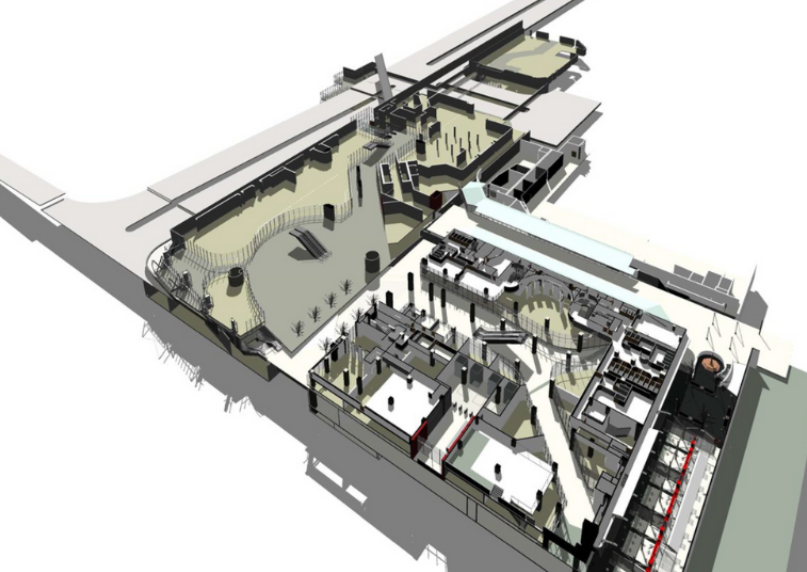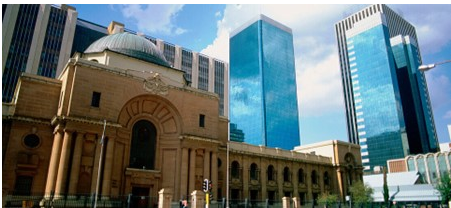Africa's new wave architecture

Advertising
09-01-2020
Read : 366 times
Bizcommunity.com
Source
We are entering a new phase in the history of African architecture. A period defined by African architects who are moved by cultural nuances and societal needs, and who draw heavily on the very roots of architecture across the continent.
It remains a rather onerous undertaking to try to extract common threads from the architecture of a continent as culturally and geographically diverse as Africa. Scholars such as Nnamdi Elleh have attempted to distil the essence of African architecture into three major influences: traditional architecture, Islamic and Western influences, while a series of 10 books endorsed by the International Union of Architects, World Architecture 1900-2000, gave little regard to traditional African architecture, instead focusing almost exclusively on the colonial heritage.
What most African countries did have in common, for the better part of the century, was a shared history of colonialism and its aftermath. Pushed to the background during this period was Africa’s rich history of rural architecture; a tradition still present today, in a diminishing form, which holds great lessons for the evolution of African architecture.
Reconnecting with the past
There can be no better expression of this fundamental approach than South African Peter Rich’s Mapungubwe Interpretation Centre in Limpopo, a building which stands proudly as an example of traditional craft adapted to novel construction methods. Thin-skinned timbrel vaulting effortlessly combines contemporary and cultural influences, creating social spaces and reducing environmental impact. The Mapungubwe centre, which won the 2009 World Building of the Year award, is very much a response to nature and is truly unique to Africa.
Another architect who is particularly impressive in this regard is Burkino Faso’s Francis Kéré, who studied in Germany but is celebrated at home for building schools that fuse local materials and crafts with contemporary thinking, technological know-how and environmental innovation. In 2017 Kéré told Dezeen magazine that his first school “… is not Westernised, is not [a] traditional African building” but one that “responds best to the climate and to the needs of the people, using the most available materials”. In this case, clay.
Great value in traditional methods
Working with natural raw materials like clay is not new to African architecture, but the use thereof has been forgotten and shunned in favour of popular Western materials like glass and steel. However, these traditional methods hold great value for innovative architects.
Back in the 1940s, Egypt’s Hassan Fathy deployed a similar approach in building low-cost housing that used local resources and was designed with the needs of the inhabitants in mind. Fathy revitalised a lost tradition of building in mud for his New Gourna project. While the project was dogged by political and financial complications, and nearly 40% of the original buildings are said to have been lost, it is still a pioneering example of sustainable architecture.
In a world where social, economic and environmental demands are calling out for alternative approaches, architects seeking new forms of cultural expression are being compelled to look beyond generic skyscrapers towards solutions which effortlessly fuse both regional and global influences. When these projects come together, they raise the bar for architecture around the world.
Examples of excellence
Probably one of the most impressive buildings in Africa today epitomises the continent’s place in the global imagination. It is the result of an international competition in 1989 to rebuild the great library of Alexandria, Egypt. Snøhetta, working with local architects Hamza Associates, created the 11-storey Bibliotheca Alexandrina alongside Alexandria’s ancient harbour.
Snøhetta is part of a new generation of innovative architects operating on a global stage today. They are not African, they are Norwegian, but what they bring to the table is a depth of conceptual thinking that finds expression in bold structures and powerful cultural symbolism.
The Bibliotheca Alexandrina has to be seen to be fully appreciated: A disc of about 160m in diameter tilts out of the earth with the modern, high-volume building beneath comprising terrace floors which rise to 32m in height and descend 12m into the ground. The tilted roof, composed of an array of roof lights, is said to recall the ancient Alexandrian lighthouse, one of the seven wonders of the ancient world. Details like the exterior stone wall façade, which is clad in Aswan granite and engraved in 120 scripts of the world, are a celebration of Alexandria’s glorious past as much as its aspirations for the future.
On the other side of the coin are equally impressive structures being created for Western markets by African architects; with David Adjaye’s Smithsonian National Museum of African American History and Culture in Washington DC being a prime example. The winner of the 2017 Beazley Designs of the Year awards, Adjaye’s creation has been called “a major turning point” in architecture. Now a knight of the British realm, Adjaye was born in Tanzania, is of Ghanaian ancestry and lived in Egypt, Yemen and Lebanon before moving to the United Kingdom at age nine. As such, he weaves together unique cultural nuances with care, attention and deference.
Bold, powerful, multilayered tapestry
In Adjaye’s hands, the African American museum became more than just a sad reflection on the history of slavery. Instead it is a powerful statement of what African architecture unencumbered by history might express. Adjaye describes his building as adopting a posture of praise, opening up as it rises, rather than hunkering down. The result is bold, powerful and a multilayered tapestry which imprints African values into the very heart of the West. That is a potent statement.
Both structures have added nuanced cultural expression to their respective cities, and both highlight that, given the diversity and cultural depth within Africa, there can be no single definition of African architecture. What African countries do share, however, is a colonial history, a struggle to emerge from that yoke and a desire to assert themselves.
This, in a city context, brings particular challenges since architecture cannot be disentangled from increasing social and environmental pressures on our urban agglomerations. As growing African cities battle massive infrastructure challenges, urban sprawl, decaying inner cities, gated communities and a steady reduction in green spaces, it is becoming evident that African architects must forge a new direction. Sustainable design, appropriate responses to a given regional context, cultural appreciation and respect for the community impacted by their work, are among the approaches being adopted by those trend-setters who are emboldened to draw on the past as they solve the problems of tomorrow.
Recent News
Here are recent news articles from the Building and Construction Industry.
Have you signed up for your free copy yet?









